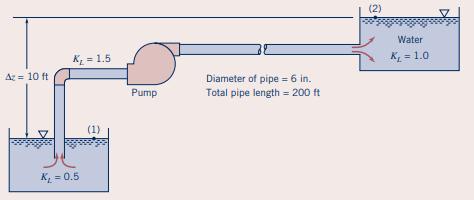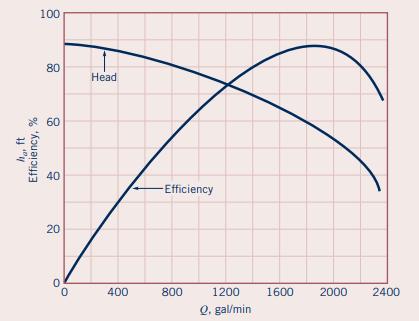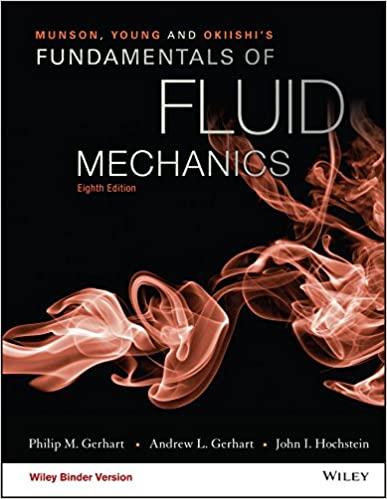A centrifugal pump having the characteristics shown in Example 12.4 is used to pump water between two
Question:
A centrifugal pump having the characteristics shown in Example 12.4 is used to pump water between two large open tanks through \(100 \mathrm{ft}\) of 8-in.-diameter pipe. The pipeline contains four regular flanged \(90^{\circ}\) elbows, a check valve, and a fully open globe valve. Other minor losses are negligible. Assume the friction factor \(f=0.02\) for the \(100-\mathrm{ft}\) section of pipe. If the static head (difference in height of fluid surfaces in the two tanks) is \(30 \mathrm{ft}\), what is the expected flowrate? Do you think this pump is a good choice? Explain.
Example 12.4
Water is to be pumped from one large, open tank to a second large, open tank as shown in Fig. E12.4a. The pipe diameter throughout is 6 in., and the total length of the pipe between the pipe entrance and exit is \(200 \mathrm{ft}\). Minor loss coefficients for the entrance, exit, and the elbow are shown, and the friction factor for the pipe can be assumed constant and equal to 0.02 . A certain centrifugal pump having the performance characteristics shown in Fig. E12.4b is suggested as a good pump for this flow system.
With this pump, what would be the flowrate between the tanks? Do you think this pump would be a good choice?
Fig. E12.4a

Fig. E12.4b

Step by Step Answer:

Munson Young And Okiishi's Fundamentals Of Fluid Mechanics
ISBN: 9781119080701
8th Edition
Authors: Philip M. Gerhart, Andrew L. Gerhart, John I. Hochstein





